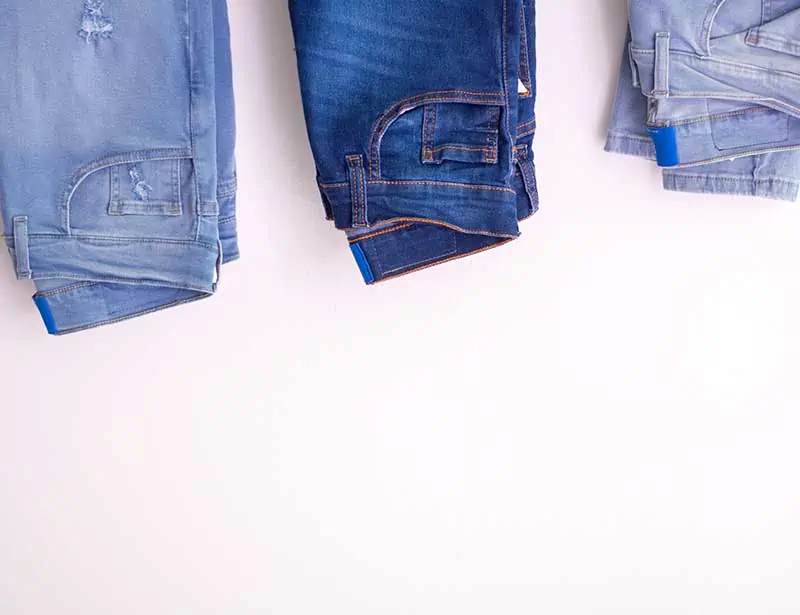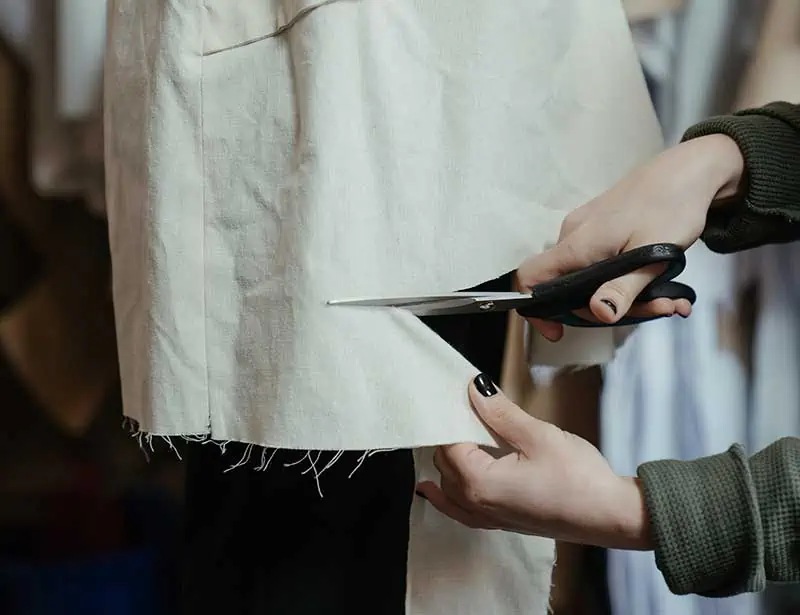The fashion industry is responsible for 8% of carbon emissions because supply chains pump loads of water to irrigate cotton plantations, use oil-based pesticides, and other methods that increase pollution. All of this happens because of overproduction by the fast fashion industry. As such, what are the alternatives to fast fashion?
Most successful fast fashion brands use influencers, and other marketing means to sell their products at meager prices while producing new clothing every two weeks. This all comes at a considerable cost to the lives of the workers and the environment. We cannot ignore the environmental impact of the clothes, shoes, and products these companies churn out.
There is an increase in awareness of how fast fashion clothing manufacturing and production causes pollution. As a result, more clothing companies find themselves forced by consumer preference or voluntarily changing their ways. However, it can prove difficult to tell if these brands are making fundamental changes or merely marketing their clothing items as eco-friendly to make money.
It’s easier, however, to spot the polluting fast fashion brands, which we explore in this article. We will also discuss how changing your shopping habits can help you shop sustainably. Here are some tips that will help you avoid supporting the business practices of polluters:
Know The True Cost
For many, it’s exciting to find a nice t-shirt at a low price range even when they are confident that the price should be more than it is. Fast fashion brands sell these items at these low prices and still make huge profits.
We should ask how raw resources can be procured, processed, sewn into clothing, and sold at such a low price? The answer, of course, is low-paid labor and lower production standards across the supply chain to cut costs.
Sustainable fashion brands often charge more for simple clothing. With the best of them and many of the rest, you can safely buy their wares knowing they make these clothes from organic fair trade cotton or eco-friendly materials.
Additionally, the people who make these clothes are compensated fairly. Prices are not always the giveaway tip to spot a fast-fashion company because more premium brands can still produce fast fashion and charge more. The reason, simply, is higher margins.
Related: 7 Fast Fashion Documentaries Worth a Watch
Shop Locally
Even the smallest fashion products have their own carbon footprints, primarily since pieces of affordable clothing are often produced internationally.
Cotton sourced from China can be processed into vintage clothing in Bangladesh before shipping to the US or Europe. That’s how the cycle goes before your fast fashion clothes reach your closet. Most people are aware of the journey their clothes take but still find it challenging to shop sustainably.
Instead of choosing items manufactured on faraway shores, shop from local stores that highly value crafting their own goods using organic materials. Doing so supports the local economy and reduces the impact of shipping goods halfway across the world.
Shop Essentials

Shopping for everything you find online or at a boutique is wasteful. Fast fashion is usually trendy and may look great on you today, but in a few months, they’ll have come up with something new to replace it, encouraging you to buy more. These clothes may likely remain in your wardrobe for a long time before making their way to a thrift store, or you end up sending old clothes to a recycling company.
Instead of shopping for fast fashion, go for ethical and sustainable clothes that never go out of style. Sustainable brands like Everlane often sell classic and minimalist wear that looks good in any season and year. It would be best if you filled your closet with slow-fashion clothes that don’t go out of style; this way, you can save money and the environment.
Shop Second-hand
There are several second-hand alternatives to fast fashion, but thrift shopping remains the best.
Once you start shopping for used clothing, you may never return to fast fashion. You can find new fashion trends and top fashion brand products like t-shirts in online thrift stores, often for a lower price than you’d expect.
It can be gratifying to find sustainable fashion products in a charity shop, browse the shelves of a second-hand store, vintage shops, fairs, eBay, boot sales, and local clothing swaps. With persistence, you can find all the apparel items you might ever need.
Related: What does it mean to go thrifting?
Rock Your Unique Style
Stock your wardrobe with sustainable fashion that shows off your strong sense of style. Something as simple as this can seem challenging because of the clever marketing the fast fashion brands use to encourage you to jump on the latest trends and buy their latest and greatest. Fill in the gap by purchasing high-quality items that last.
Meanwhile, clean out your closet and recycle those items you no longer need.
Buy High Quality
The cost of buying clothes has become so cheap that it’s become easy to replace rather than choose quality first. Every purchase of a timeless fashion piece made to last might readily replace a number of throwaway fast fashion items. If we stop purchasing low-quality clothes no matter the style, we will push these companies to improve their clothes’ quality.
Clothing production is the third biggest manufacturing industry after the automotive and technology sectors. Textile waste and production contribute more to climate change than international aviation and shipping combined.
This is why these companies are not concerned if their factories’ use suitable materials and how their activities affect the environment. Their primary goal is to lower production costs to the detriment of their consumers and the environment.
Revamp Your Clothes

The average American throws away around 81 pounds of clothing yearly, and most of these clothes are made of synthetic and non-biodegradable fiber. Throwing these clothes or fabrics away means filling up the landfills2.
You upcycle clothes, sewing new clothes from your old ones. Instead of throwing them away, be creative and repair or redesign the clothes to look different. You can mend your torn jeans and cotton tees or add new fabrics to change the style.
With a bit of sewing practice, you can revamp an unloved second-hand item into something unique that will make you feel good when you wear it. You can also turn to upcycling fashion brands who do the work for you turning old clothes into new ones.
What To Look Out For In A Sustainable Fashion Brand
Have you ever stumbled on a dead end when looking for a store that sells better clothing alternatives to fast fashion? You may find sustainable fashion hard to find near you, and most times, people don’t know how to differentiate between a fashion brand that wants to end mindless consumption and one which just wants to sell to make money.
Thankfully, there’s a volume now online to suit almost every taste, and what’s more, you can shop from the comfort of your home with a few clicks. Here’s a list of things to look for in sustainable fashion brands:
They give back
Brands that consistently give back to their community or organize charity events to support others demonstrate their values with action directly. Fast fashion industries mostly have their production companies in countries with emerging markets.
The workers’ rights are often violated, and the high cost of running a large fashion company in countries like India, Pakistan, and lots more affects the local environment. Fast fashion companies don’t want to be held accountable for their actions, so they choose places to operate without solid regulations.
They recycle
Instead of putting designer labels and a high price tag on their shoes, clothes, and other fashion items, ethical brands recycle or upcycle materials instead of using raw materials. Less than 11% of brands are implementing recycling strategies for their items4.
Only sustainable stores introduce recycling programs that sometimes exchange their customers’ old clothing for new—thereby reducing the amount of waste going to landfills.
They are Eco-Conscious
This is another way to know a fashion company is committed to limiting its environmental impact and carbon footprint. The fashion industry is the second biggest polluting industry in the world1, and it needs more sustainable companies with affordable price points and innovative ways to reduce their eco-impact.
You can check the brand’s website and Instagram page for more details about its processes. Look out for clear goals, progress, and transparency.
Empower the economy
Contributing to looking after the planet and the people working in the fashion industry should be core to the business operations of a sustainable company. To do so, look for their role in creating fairly paid and skilled jobs for the communities in which they produce their products.
Marginalized women and disadvantaged communities should be empowered by the brands that operate in these areas.
They are organic certified.
Eco-friendly brands use sustainable fabrics like GOTS-certified organic cotton and bamboo fabric to make t-shirts or other fashion trends like shoes, socks, bags, backpacks, caps, and lots more.
They also use natural quality materials that are biodegradable and do not release microplastics into the water system when you wash them. Also, look out for brands that genuinely use materials such as recycled nylon and recycled polyester as opposed to new synthetics that require non-renewable resources to produce.
People who shop from these stores are helping the environment by buying awesome organic basics clothing.
Fair Trade and Fairly Paid
Fashion companies that use child labor to speed up their production process do this because they do not want to pay their workers fairly.
Every company should pay fair wages and living wages where appropriate. Sustainable companies should not take advantage of the people creating clothes throughout their entire supply chain and living in their companies’ communities. Avoid products made in these unsafe, unhygienic conditions by checking the brand’s transparency before shopping from them.
You could ask to know how your favorite brand treats its workers. This way, you can ensure they have established fair trade practices and healthy relationships between the brand and its workers. Look for fair trade-certified brands that have met ethical production standards.
Packaging
Packaging accounts for 30% of municipal solid waste3. A genuinely sustainable company will need to adopt green packaging solutions using biodegradable materials instead of plastic. This benefits the environment by ensuring a decrease in greenhouse gas emissions and helps result in less plastic waste reaching the ocean.
How to Know If A Brand Is Sustainable
Visit their website
Every transparent brand will have all the information you need about them on their website. Even though most brands sugarcoat their About Us pages to their advantage, you will be able to check their sustainable practices or not by the language they use.
The fact that a product reads handmade does not mean it is sustainable clothing. Be alert and stay critical when reading the pieces of information provided by these brands on their websites.
Learn the brand’s story and mission
Find out the mission of the brand and who founded it? Why was it founded? This will provide you with a clear understanding of the ethical guidelines they follow, why they champion sustainable business models, and what they do for the environment.
Sustainable alternatives to fast fashion exist for sure, and many do not require you to spend a lot of money. These alternatives make it easier for you to find great fashion items and buy clothes without contributing to waste culture. You can stop wearing fast fashion and still enjoy fashion in a sustainable way.

